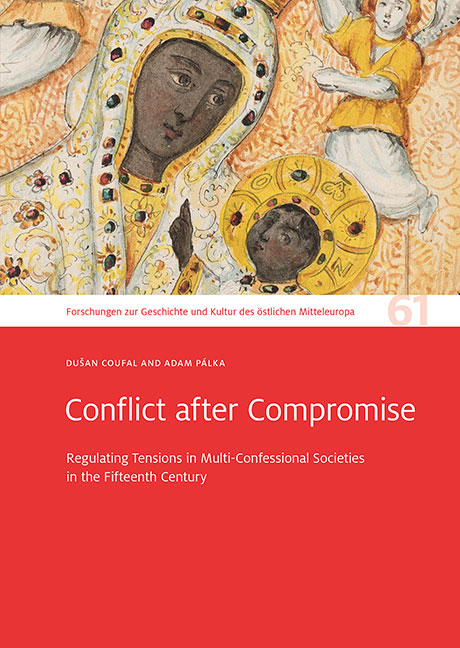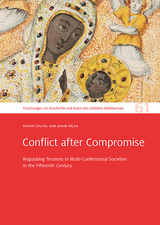Conflict after Compromise
Regulating Tensions in Multi-Confessional Societies in the Fifteenth Century. Forschungen zur Geschichte und Kultur des östlichen Mitteleuropa 61
Seiten
2024
Sandstein Kommunikation (Verlag)
978-3-95498-830-3 (ISBN)
Sandstein Kommunikation (Verlag)
978-3-95498-830-3 (ISBN)
You can find a reading sample at "https://verlag.sandstein.de/reader/98-830_ConflictAfterCompromise"
An understanding of long-term conflict according to phases of appeasement and confrontation holds several advantages for historians. A conflict conceived in its longue durée can be evaluated differently from how its individual phases would be. Identifying the persistent features and elements of the conflict reveals coherence and continuity which would otherwise be obscured. Moreover, tracking the characteristic common denominators also highlights the changes that occurred as the conflict evolved. In addition, a long-term perspective opens new angles on conflict-mitigating peace treaties. Although contemporaries often made their agreements in perpetuity rather than for fixed terms, hindsight allows us to recognize compromise as an unstable, problematic landmark in a protracted conflict.
The historians in this volume focus precisely on this disfunction or unsustainability of compromise. The starting point is Bohemian history in the fifteenth century. However, the problematic coexistence of Utraquists and Catholics is here primarily an opportunity for comparison with multi-confessional societies in other regions of fifteenth-century Europe. This volume uses selected examples to show the advantages of such a comparative perspective.
An understanding of long-term conflict according to phases of appeasement and confrontation holds several advantages for historians. A conflict conceived in its longue durée can be evaluated differently from how its individual phases would be. Identifying the persistent features and elements of the conflict reveals coherence and continuity which would otherwise be obscured. Moreover, tracking the characteristic common denominators also highlights the changes that occurred as the conflict evolved. In addition, a long-term perspective opens new angles on conflict-mitigating peace treaties. Although contemporaries often made their agreements in perpetuity rather than for fixed terms, hindsight allows us to recognize compromise as an unstable, problematic landmark in a protracted conflict.
The historians in this volume focus precisely on this disfunction or unsustainability of compromise. The starting point is Bohemian history in the fifteenth century. However, the problematic coexistence of Utraquists and Catholics is here primarily an opportunity for comparison with multi-confessional societies in other regions of fifteenth-century Europe. This volume uses selected examples to show the advantages of such a comparative perspective.
| Erscheinungsdatum | 20.09.2024 |
|---|---|
| Zusatzinfo | 3 farbige Abb. |
| Sprache | englisch |
| Maße | 170 x 240 mm |
| Themenwelt | Geschichte ► Teilgebiete der Geschichte ► Kulturgeschichte |
| Schlagworte | Bohemian history in the fifteenth century • conflict-mitigating peace treaties • multi-confessional societies of fifteenth-century Europe |
| ISBN-10 | 3-95498-830-5 / 3954988305 |
| ISBN-13 | 978-3-95498-830-3 / 9783954988303 |
| Zustand | Neuware |
| Haben Sie eine Frage zum Produkt? |
Mehr entdecken
aus dem Bereich
aus dem Bereich
der stille Abschied vom bäuerlichen Leben in Deutschland
Buch | Hardcover (2023)
C.H.Beck (Verlag)
CHF 32,15
vom Mittelalter bis zur Gegenwart
Buch | Softcover (2024)
C.H.Beck (Verlag)
CHF 16,80
eine Geschichte der Welt in 99 Obsessionen
Buch | Hardcover (2023)
Klett-Cotta (Verlag)
CHF 34,90




